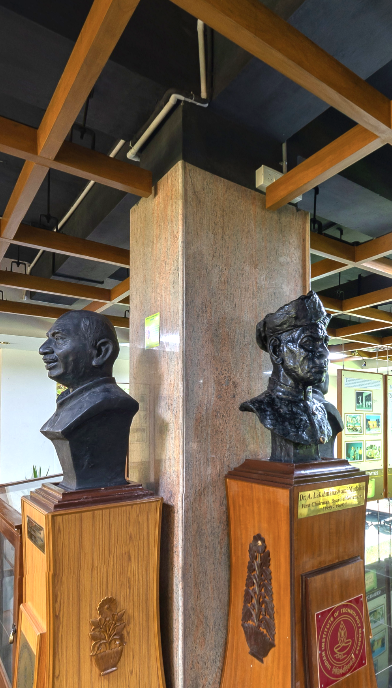An eclectic collection of objects, each of which has its own story. Many of the exhibits in this collection were contributed by alumni of IIT Madras.
-
Model of Gajendra Circle (1960s)
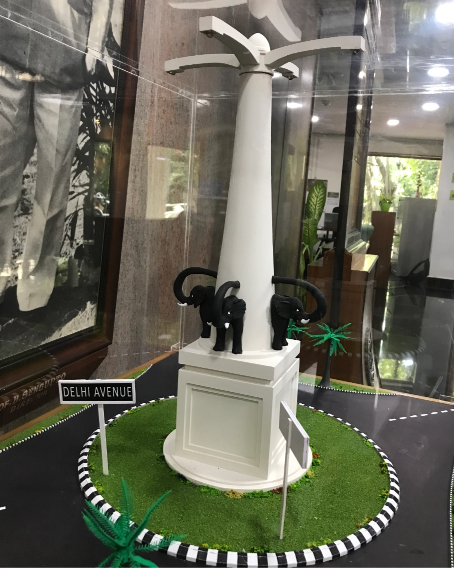
This is a model of Gajendra Circle, one of the iconic landmarks of IIT Madras. The model depicts ‘GC’ in the form it had in the 1960s. Gajendra Circle is a traffic roundabout where four roads: Bonn Avenue, Delhi Avenue, Alumni Avenue and Hostel Avenue meet. The model was unveiled in March 2017 by Mr. R. Mahadevan, alumnus of the first batch of IIT Madras. -
Replica of Inter-IIT Trophy
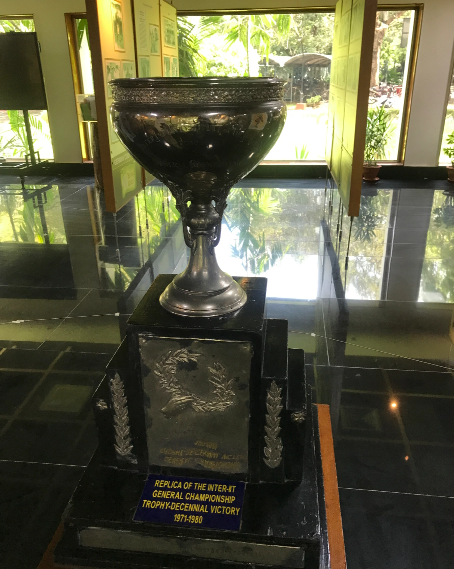
This is a replica of the Inter-IIT General Championship Trophy. The Inter-IIT Sports Meet is an annual sports and athletics tournament in which all the IITs participate. IIT Madras’s sports and athletics contingent had a historic run in this tournament up to 1980, winning 10 Inter-IIT Sports Meets in a row. This feat, celebrated by the replica, has been unmatched by any other IIT contingent thus far. The label reads ‘Replica of the Inter-IIT General Championship Trophy—Decennial Victory 1971–1980.’ -
Original Stone Laid at the Inauguration of IIT Madras (1959)
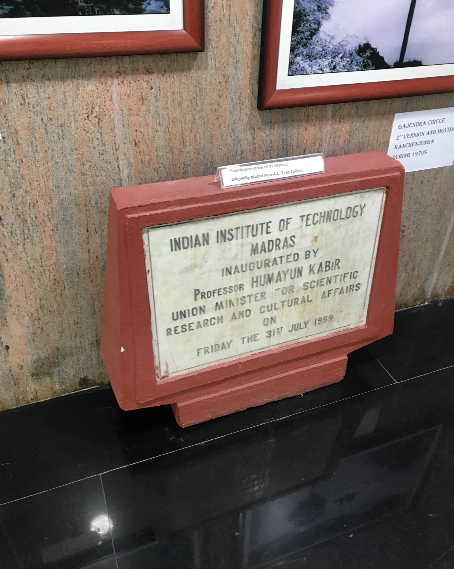
This is the original stone laid at the inauguration of IIT Madras in 1959. This marble slab, measuring approximately 72 centimetres by 50 centimetres, has been fixed in concrete. The foundation stone was originally laid near A. C. Tech College on 31 July 1959. The stone stood outside the Humanities and Social Sciences Building (HSB) for many years before being brought to the Heritage Centre for display. -
Portrait of Prof. B. Sengupto
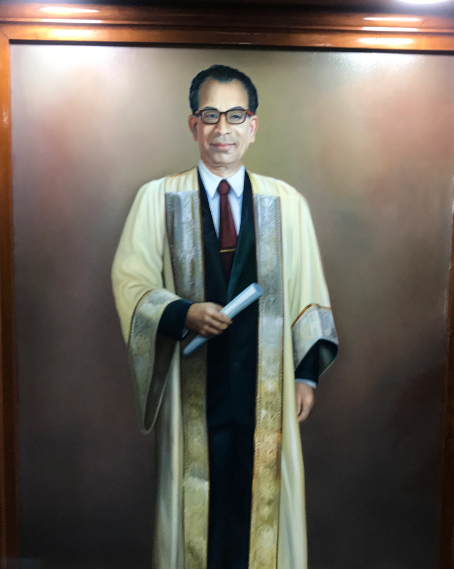
This is a portrait of Prof. B. Sengupto, the first Director (1959–1967) of IIT Madras. Measuring six feet by four feet, it is the tallest item on display at the Heritage Centre. This oil painting is a re-creation of an earlier portrait, which was damaged by moisture and termites. The original was unveiled by Dr. M. S. Thacker (Director General of the Council of Scientific and Industrial Research) at a ceremony that took place at the Open Air Theatre on 27 January 1968. -
Bust of Pt. Jawaharlal Nehru
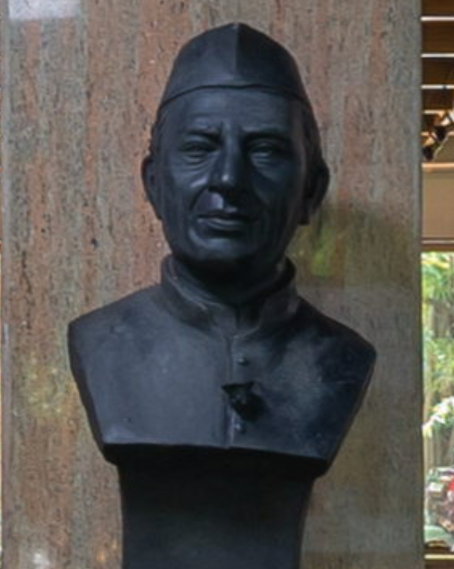
This is a bust of Prime Minister Jawaharlal Nehru. Cast in metal, the bust is approximately 68 centimetres high and has been mounted on a wooden pedestal. The Indian prime minister visited Bonn in 1956 on an official visit. His meeting there with West German Chancellor Konrad Adenauer and President Theodor Heuss was followed by the signing of an Indo-German agreement in 1959, under which Germany supported the setting up of IIT Madras. -
Bust of Mr. K. Kamaraj

This is a bust of Mr. K. Kamaraj, who was Chief Minister of Tamil Nadu (known originally as Madras State) when IIT Madras was set up. The involvement of the third Chief Minister of the state solidified the location where the institute would be situated. Mr. Kamaraj granted 633 acres of land adjacent to the Raj Bhavan for setting up IIT Madras. It comprised 300 acres of wooded land, 100 acres of lakes, irrigation lands and the rest belonged to Taramani village. -
Bust of Dr. A. L. Mudaliar
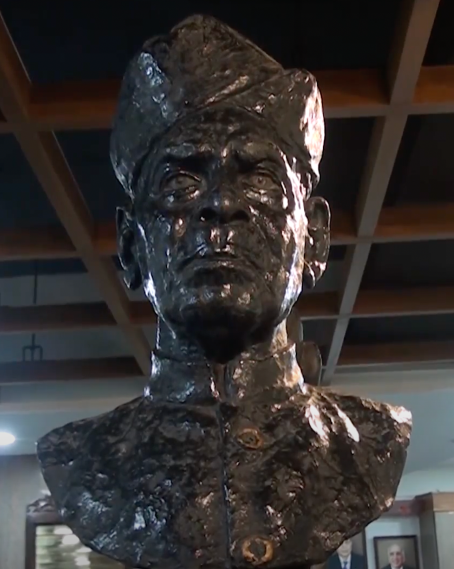
This is a bust of Dr. A. L. Mudaliar, first Chairman (1959–1969) of the Board of Governors of IIT Madras. Before the institute was set up, Dr. A. L. Mudaliar was the Chairman of the planning committee that prepared detailed plans for IIT Madras’s commencement. Apart from being a renowned medical doctor, Dr. Mudaliar was the Vice Chancellor of Madras University. The bust was made by the artist S. Dhanapal. It was unveiled by President V. V. Giri at the seventh convocation (1970) of IIT Madras. -
Emblem of IIT Madras
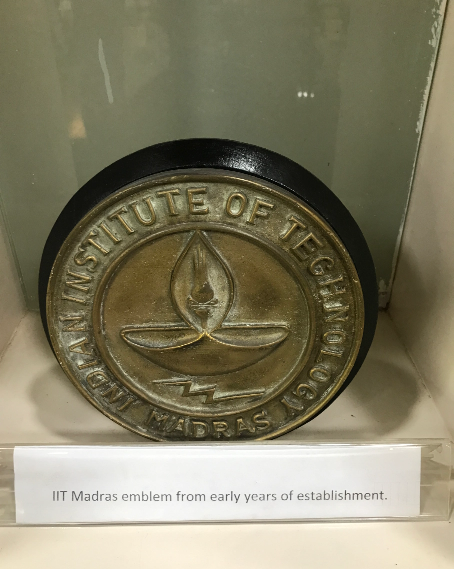
Displayed along with books and magazines at the library section of the Heritage Centre is a metal casting of IIT Madras’s emblem. This casting had originally been displayed in the Director’s office, in the Building Sciences Block, in the 1960s. It is likely that the emblem had been cast in the foundry of the Central Workshop of the institute. -
Workbench with vice, tools and fitting exercise

On this workbench are displayed some of the tools and equipment students used at the Central Workshop. These include a vice, a hammer, files, and a hacksaw. In the 1960s and 1970s, there was a ‘sandwich system’ at IIT Madras: undergraduate students spent half the time of their first two years in the workshops. They had one week of theory classes and one week of workshop practice. In one particularly well remembered exercise, students had to file down the sides of a steel channel such as the one mounted on the vice. -
Time Capsule

This is a time capsule contributed by the 2019 batch of students of IIT Madras. They will open it at the silver reunion of their batch, in 2044. The capsule was put together by the Central Workshop from acrylic sheets. The items put into the capsule are items used by the students at IIT Madras. Files and ID cards are among these. Similar time capsules of the 2017 and 2018 batches are also held at the Heritage Centre. -
Autograph Book
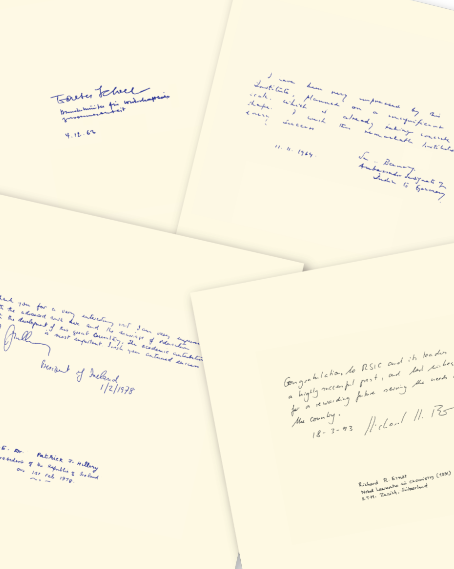
This is an autograph book in which distinguished visitors to IIT Madras over the first two decades signed their names, starting in 1963. This large book is bound in cloth. Among the signatures are those of Dr. C.V. Raman, Dr. Linus Pauling and Dr. Richard R. Ernst, all Nobel laureates. -
Trophies and Certificates

Certificates awarded to IIT Madras by the National Institutional Ranking Framework and by the Atal Ranking of Institutions on Innovation Achievements -
List of Movies Screened at Open Air Theatre in the 1960s
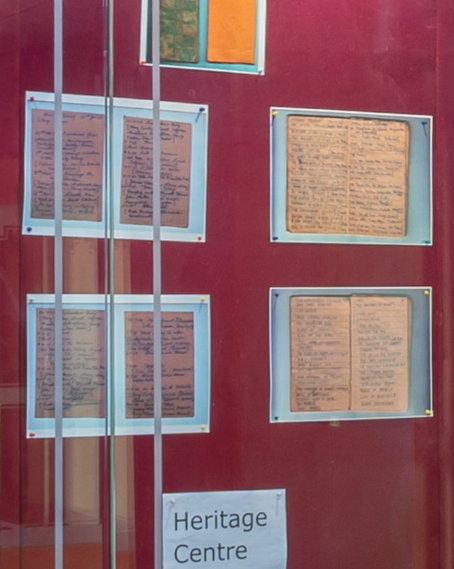
This a list of movies screened at the Open Air Theatre in the 1960s. The list was maintained by Mr. S. Ramanathan, alumnus, during his student years (1964–1969). The Film Club of IIT Madras has traditionally screened one or more movies each weekend from the earliest years of the institute to the present. Some of the films on Mr. Ramanathan’s list: ‘Portrait in Black’, ‘Satan Never Sleeps’ and ‘The Man Who Knew Too Much’. -
Trophies

This is an eclectic collection of trophies won by the students of IIT Madras. They were won at inter-collegiate events, and they were presented for victories in hockey, carrom, kabaddi, Western music and so forth. IIT Madras was ranked first in the engineering category in the NIRF rankings from 2016 to 2021. The 2016, 2017 and 2018 certificates are on display here. Also on display are NIRF awards and a photograph of Mr. S.R. Thangavelu, of the first batch of IIT Madras students, receiving the President’s Gold Medal for 1964 from Indian President S. Radhakrishnan. -
Miscellaneous Memorabilia Contributed by Alumni
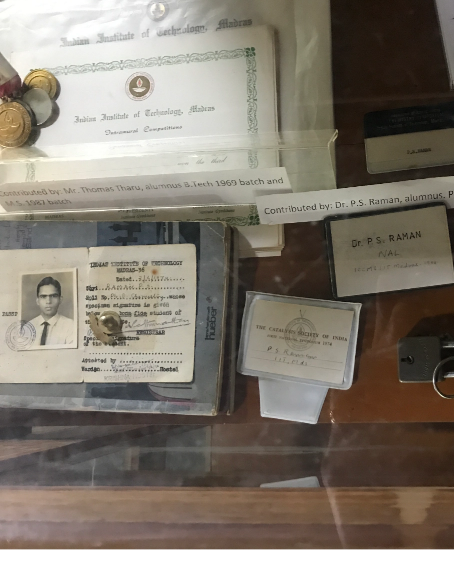
Memorabilia contributed by alumni. These include medals, identity cards and certificates. On display here is a piece completed as a workshop exercise by Mr. Ganesh Rajgopal, of the first batch of students of IIT Madras, received from his batch mate Mr. Mallik S. Putcha. -
Drawing Instruments and Slide Rules

For many years, B.Tech. students at IIT Madras used instrument boxes such as the ones displayed on this table for their engineering drawing assignments. They contain compasses with attachments, bow dividers and spare leads and points. On display is a T-square, a wooden tool used for establishing a horizontal reference on a drafting board. This T-square measures around three feet in length. The T-square was contributed by Mr. Varghese Abraham (alumnus, 1969 batch). Also on display are set squares, a protractor and French curve sets. The Heritage Centre has in its collections two slide rules. These were contributed by Mr. K. Sashi Rao and Mr. V. Srinivasan (alumni, 1969 batch). A slide rule is a mathematical tool used for various calculations. Slide rules were used until electronic calculators became available. -
Blackbuck Mascot
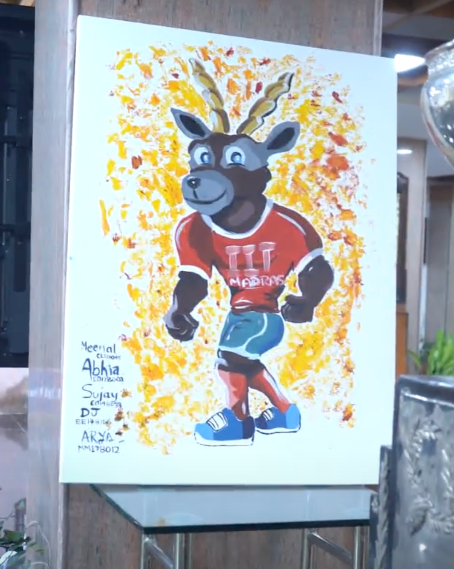
This mascot, designed by Ashwath A., is a blackbuck, the endangered antelope found on the IIT Madras campus. Five students, Meenal Kamalakar, Abhinav Azad, Sujay Srivastava, Dhruvjyoti Bagadthey and Akshat Garg, painted the mascot in front of an audience at the Central Lecture Theatre on 29 September 2019. Called the Institute Mascot Reveal, the painting, which took 10 minutes, was streamed live. The mascot is painted on canvas. -
Theatre
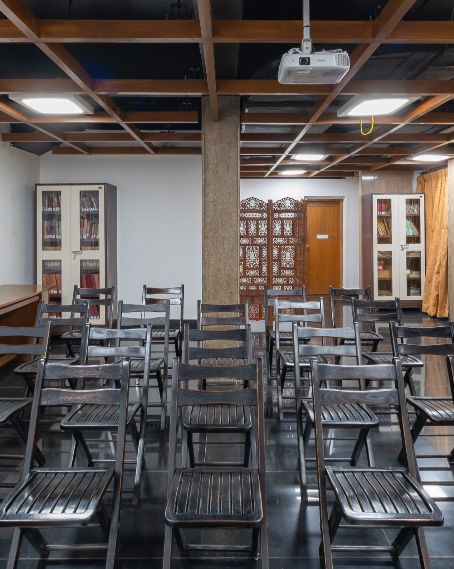
The Heritage Centre has a collection of videos on IIT Madras, which are screened in the theatre for visitors. The theatre has a capacity of 40. -
Library

The Heritage Centre has a collection of books authored by IIT Madras alumni and books about alumni. These books include A Forgotten Ambassador in Cairo, by N. S. Vinodh, Campaschimes, by Kumaran Sathasivam, First Infinities, by Vijay Nambisan, and Disrupt and Conquer, by T. T. Jagannathan (co-authored with Sandhya Mendonca). The collection also includes books, magazines and other publications relating to the institute. Notable among these are Campastimes, Spectator and Pradeep. -
Distinguished Alumnus Awardees Screen
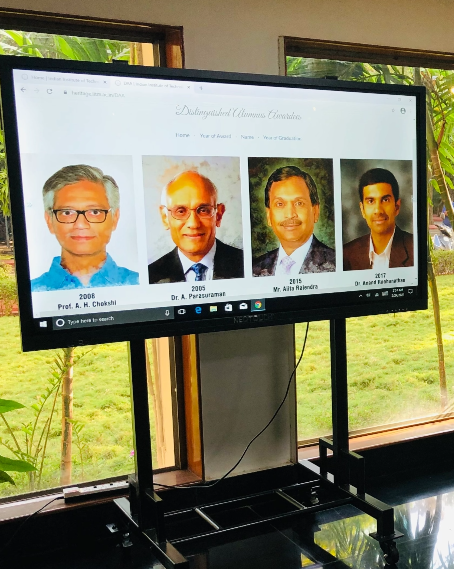
This large interactive screen displays photographs and citations of Distinguished Alumnus Award (DAA) recipients. IIT Madras awards the Distinguished Alumnus Award (DAA) to several alumni each year. The award is presented at the Institute Day celebrations to alumni who have excelled in academics, enterprise and other fields. As of 2021, a total of 181 alumni have received the awards. The awardees include Mr. T. T. Jagannathan (1970 B.Tech., Mechanical Engineering), Mr. K. V. Rangaswami (1965 B.Tech., Civil Engineering) and Mr. Anil Ananthaswamy (1985 B.Tech., Electrical Engineering). -
Photographic Collection
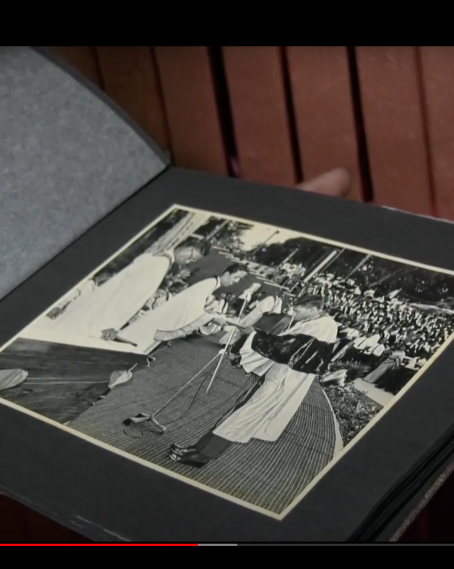
The photographic collection of the Heritage Centre includes thousands of photographs that document various events in the history of IIT Madras. The photographs are stored in albums, many of which have been restored with support from alumni. Much of the photography of the early years of the institute was the work of Mr. C. Gourishankar. The Heritage Centre has many of the original negatives developed by Mr. Gourishankar. -
Turbine

This giant snail shell-like equipment outside the Heritage Centre is a turbine that can produce 11.8 kW of power from a flow of water. Made in Germany, this turbine was originally installed in the Hydroturbomachines Laboratory in the 1960s. It was used to teach students the principles and problems of generating hydropower. The manufacturer is B. Maier KG (founded 1932). After the turbine was decommissioned, in 2020, it was given to the Heritage Centre. -
Wave Energy Model
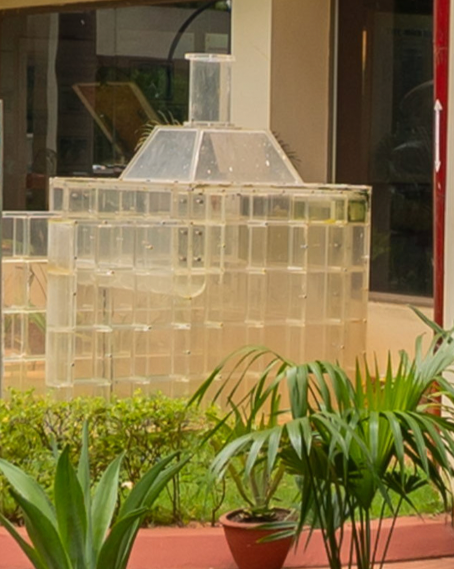
This is a three-dimensional model of a caisson that was part of a wave energy power plant. The original caisson, 10 times larger than the model, was placed in the sea near Trivandrum. The power plant generated electricity from the waves in the sea, and the electricity powered a desalination plant. The model is made from thick acrylic blocks held together by metal screws. It was used for studies in the wave basin of the Ocean Engineering Department. -
Drawing Board
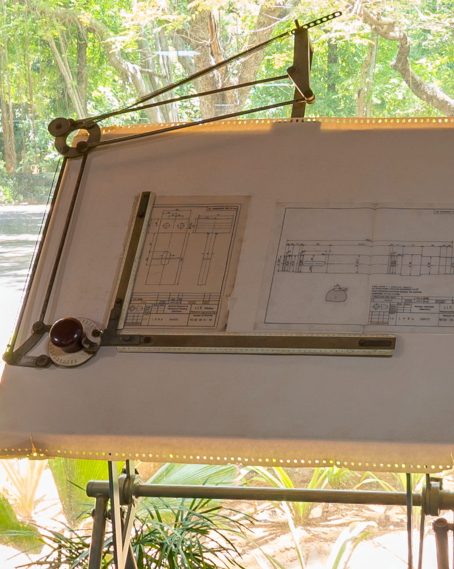
This is a drawing board that was used by draughtsmen at IIT Madras for many years, until drawings began to be largely produced using computers. Students used smaller drawing boards, which were placed flat on drawing tables. This board was loaned to the Heritage Centre by the Department of Mechanical Engineering -
Paintings
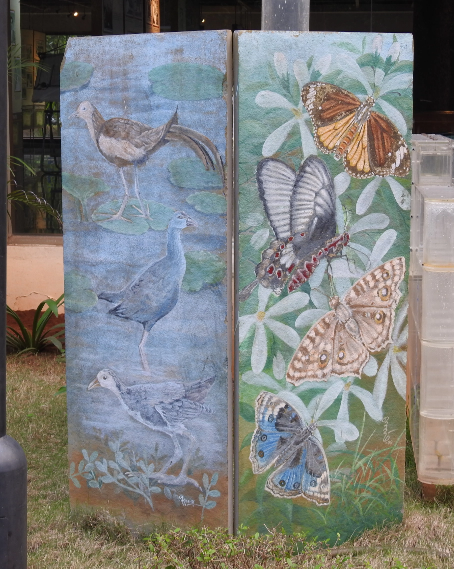
These paintings show butterfly and water bird species found in the campus of IIT Madras. The paintings were made on stone slabs. They were painted by artists who were involved in creating similar exhibits at the Adyar Poonga. -
Creators of the Heritage Centre
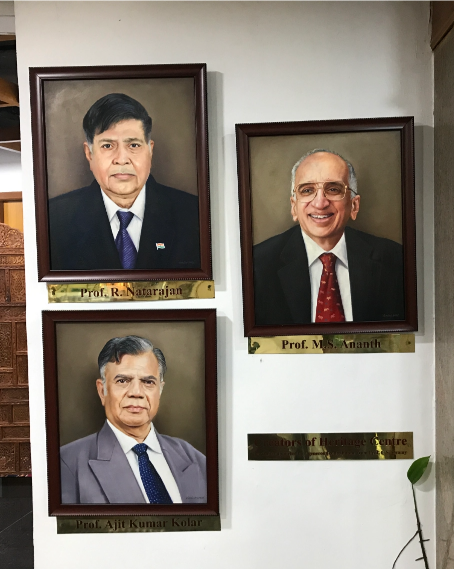
The Heritage Centre was conceived by Prof. R. Natarajan, eighth Director of IIT Madras. Prof. Ajit Kumar Kolar (Mechanical Engineering Department) collected a wealth of ‘heritage items’ and curated the exhibition. The Heritage Centre was inaugurated on 3 March 2006, when Prof. M. S. Ananth was the Director. These oil portraits (50 cm × 40 cm) are of the creators of the Heritage Centre. The portraits were supported by a contribution from Prof. C. S. Swamy. -
Publications
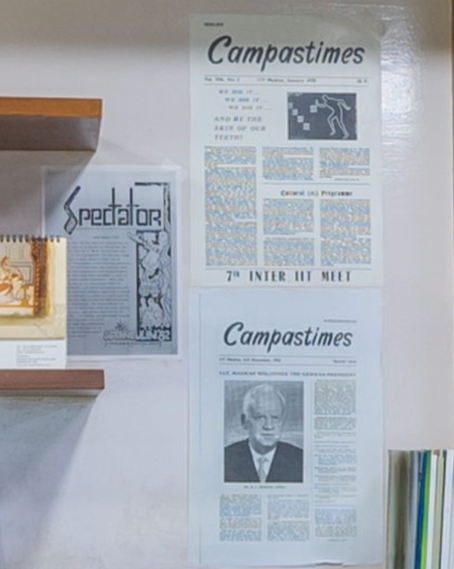
Here on display are copies of popular student and alumnus magazines that have been brought out at IIT Madras over the years. Each of these magazines, Campastimes, Pradeep, Spectator, Annual Number and so on, has its own flavour. Articles, poems, news, caricatures—these magazines have them all. You can browse through the collection at leisure in the reading area.
If you have any object that you would like to contribute to our collection, send us an email on heritage@iitm.ac.in, with details of the object and the story behind it.
- Contribute
to the Centre -
Monetary
Support - Digital
Material

